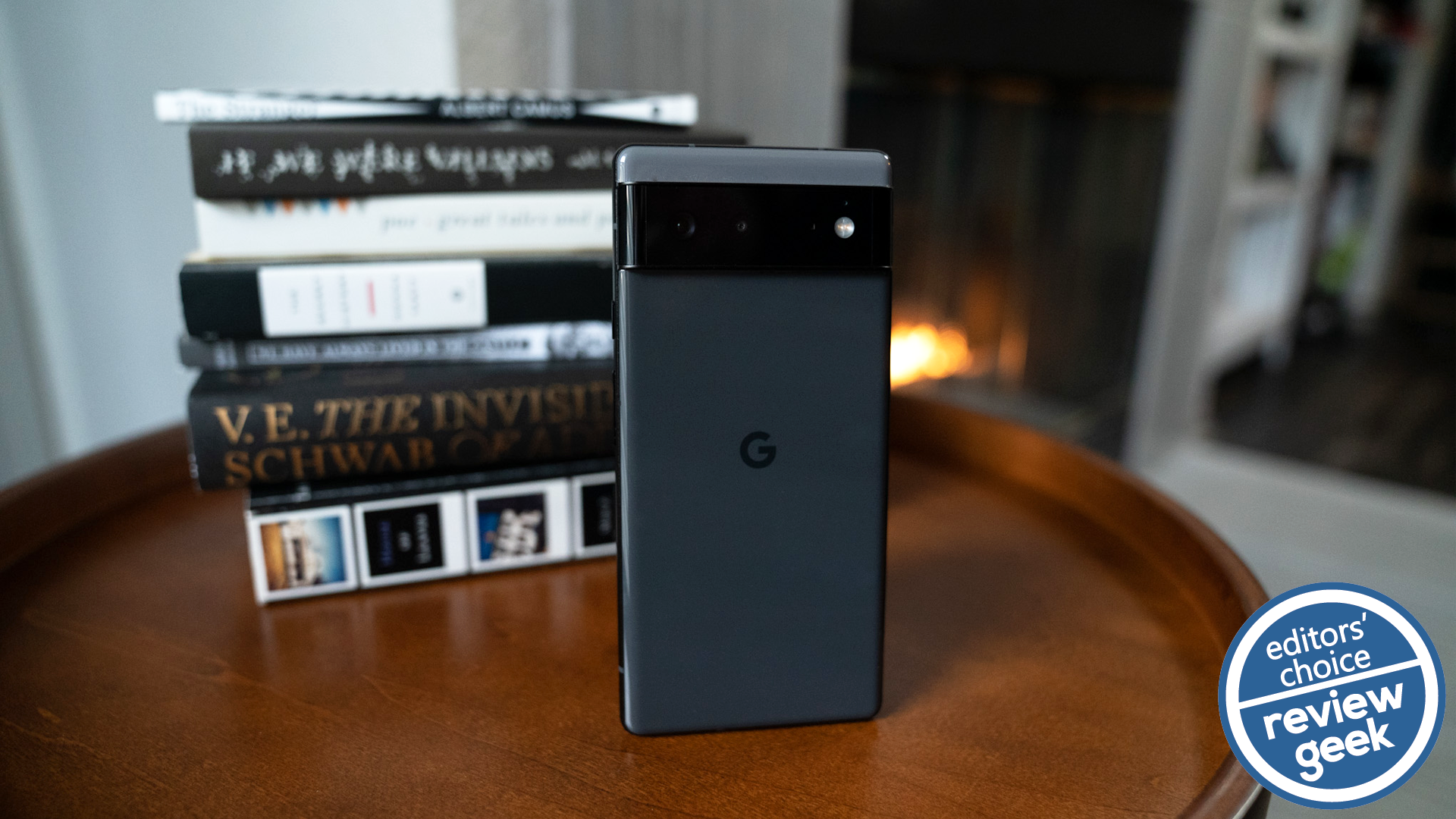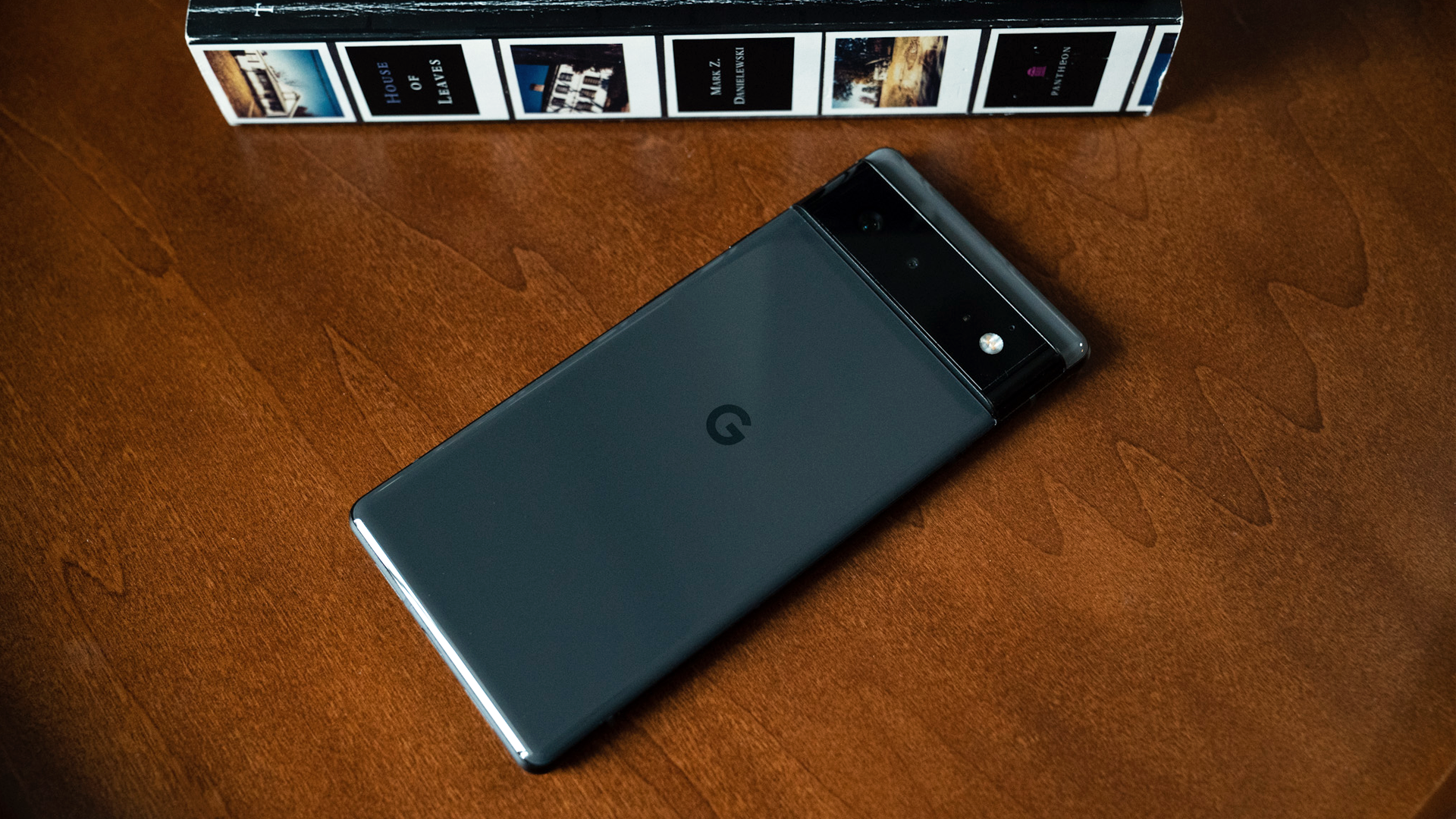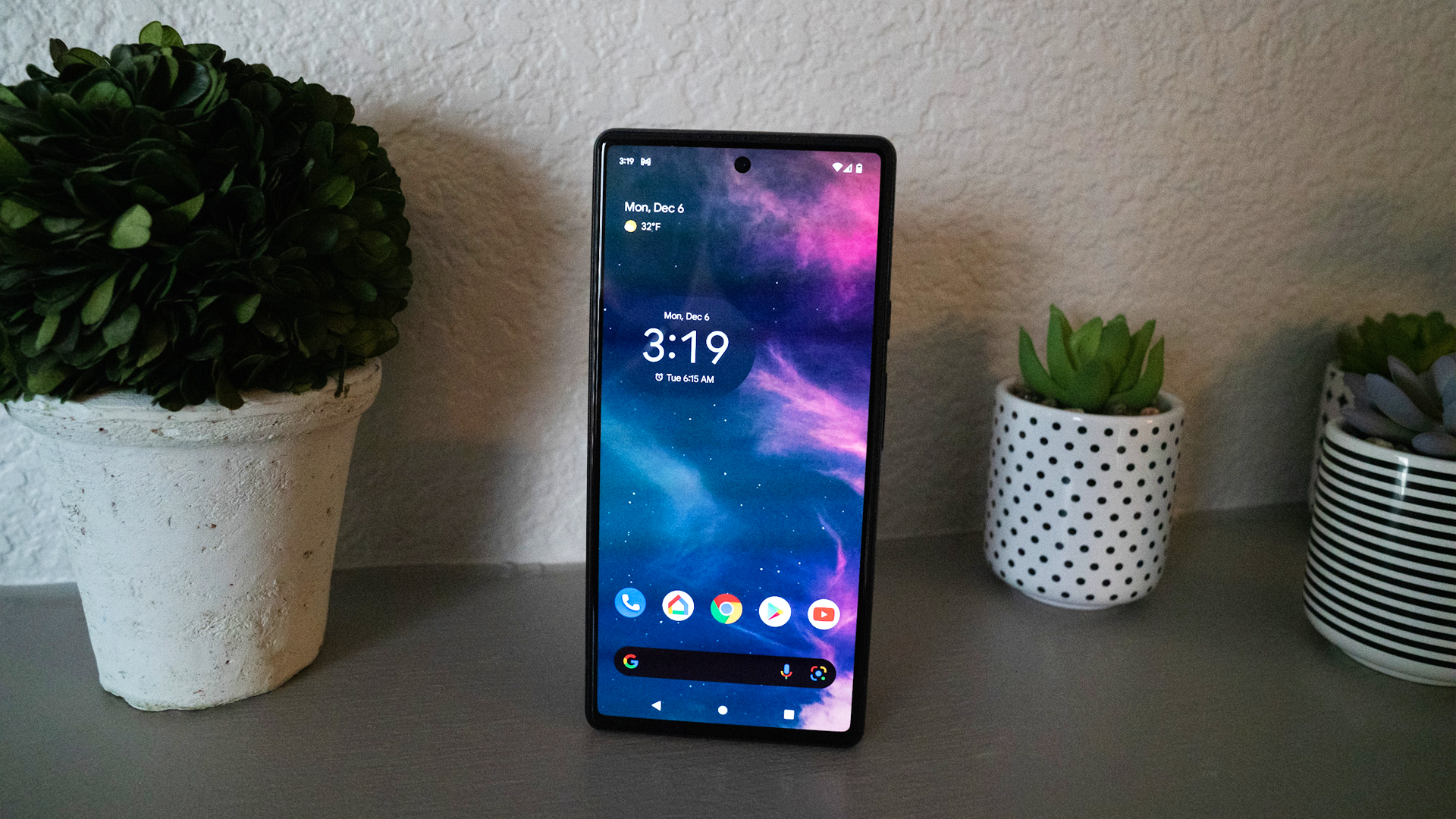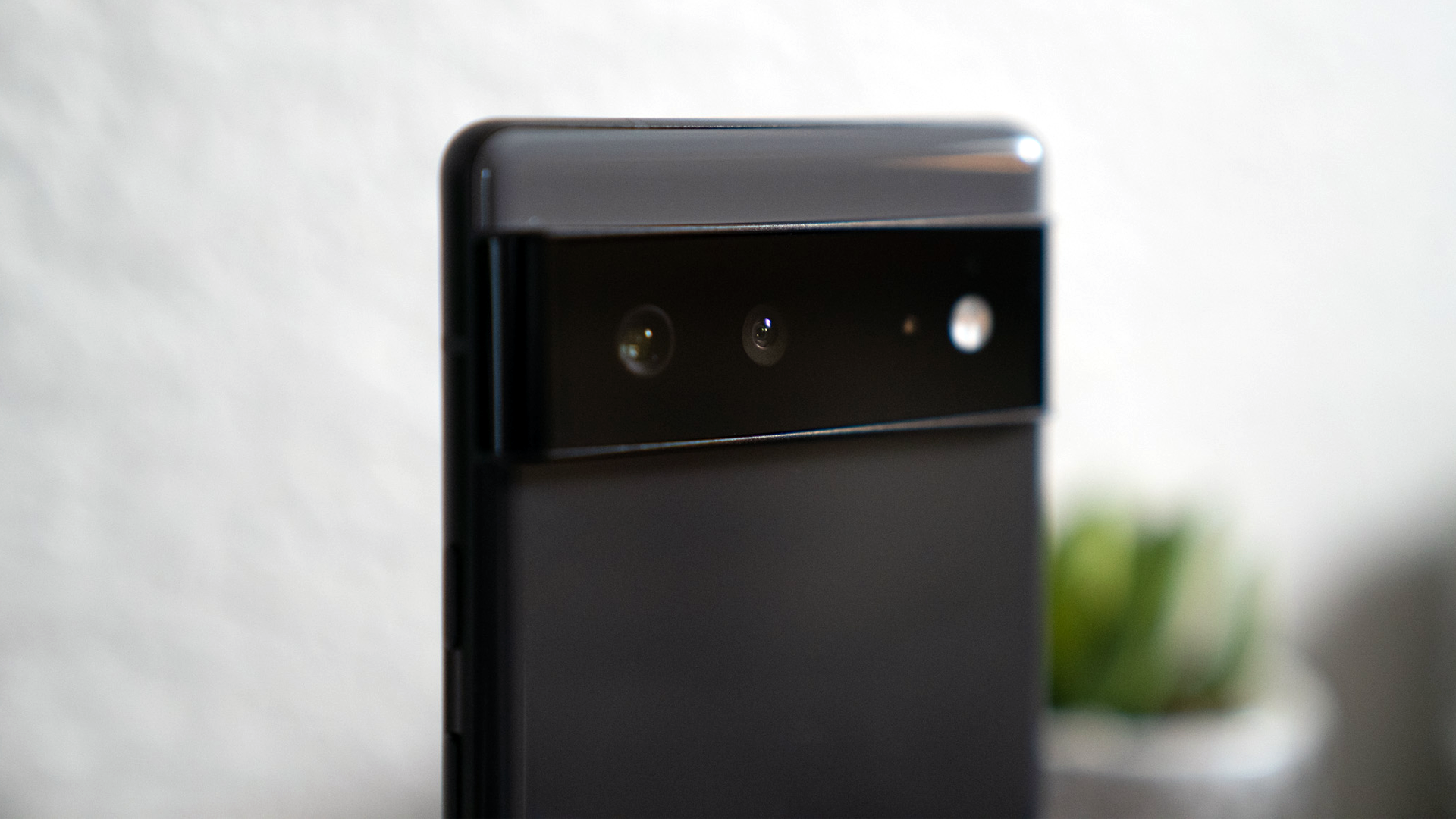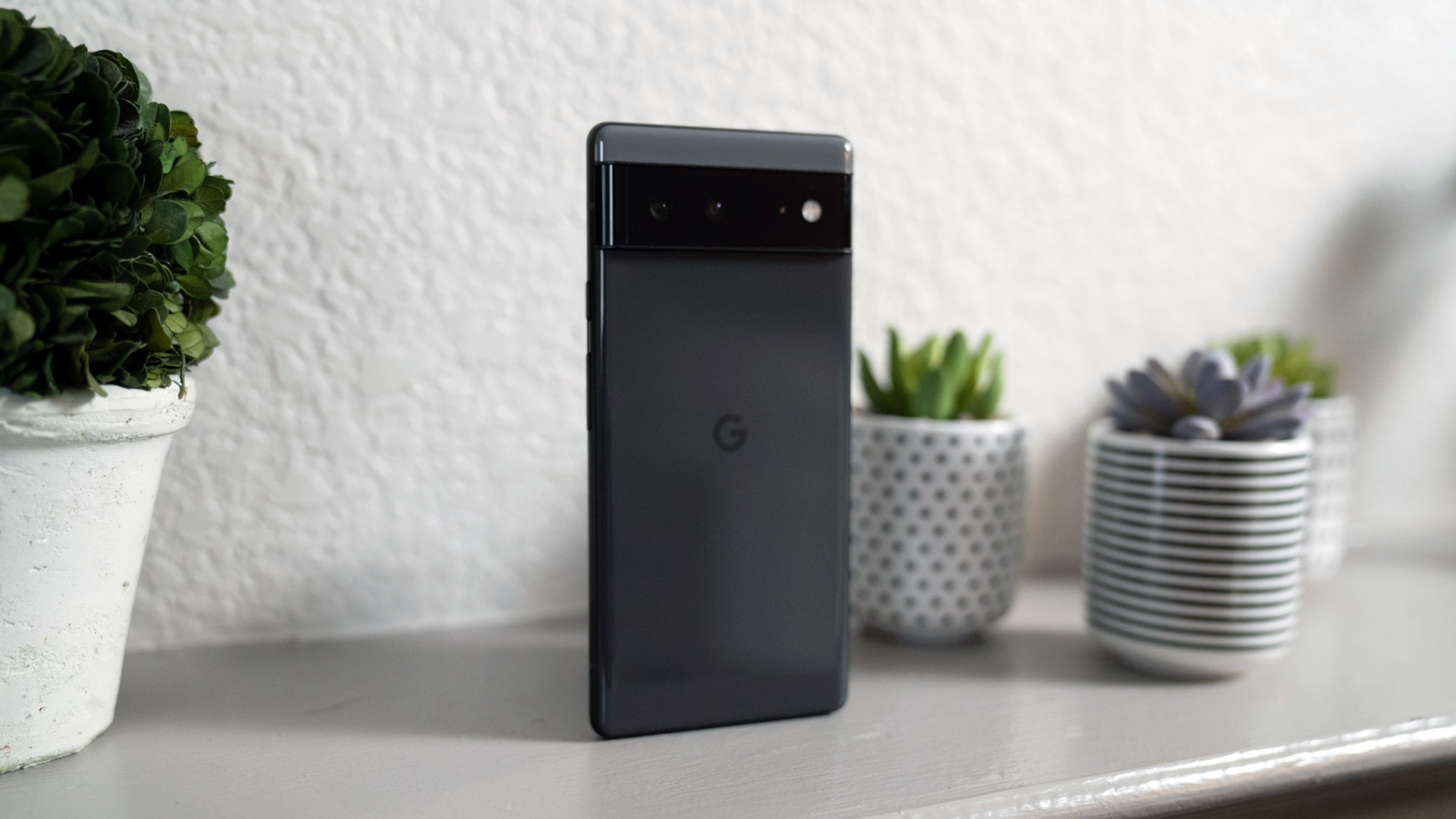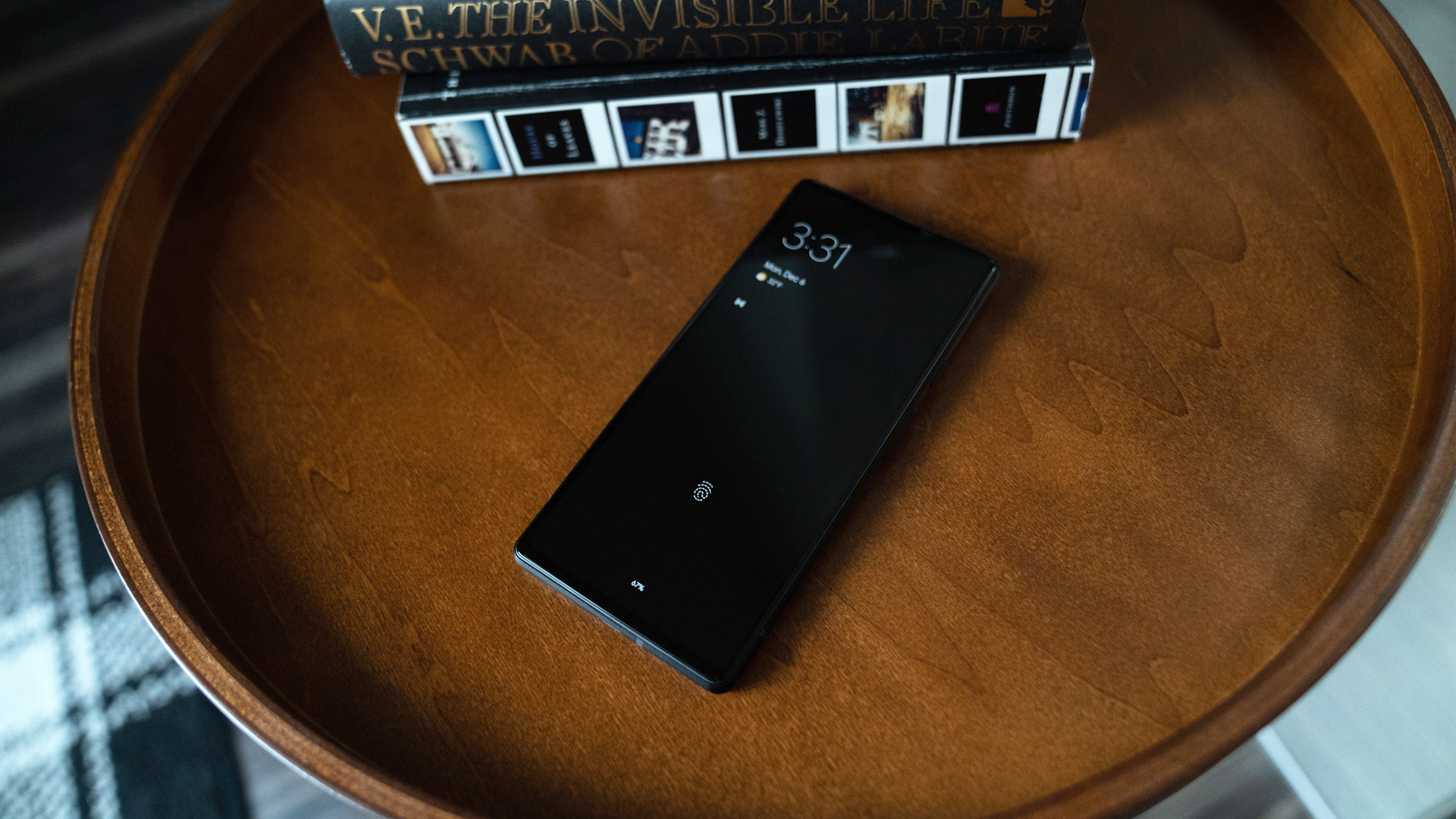Quick Links
After spending a few weeks with Google's latest smartphone---the Pixel 6 (dual-released alongside the Pixel 6 Pro)---I can easily say that it is powerful, beautiful, and quintessentially Google. And priced well under $1,000, it should absolutely be your next Android phone.
The Pixel 6 has all of that classic Google goodness, like a spectacularly powerful camera, a simple---yet iconic---design, a fantastic UI, and a fleet of fantastic Pixel-exclusive features, like those dedicated to phone calls. And paired up with equally-solid hardware, like the company's new in-house Tensor chip, the phone will readily keep up with whatever you throw at it.
Specs as Reviewed
- Processor: Google Tensor
- RAM: 8GB LPDDR5
- Display: 6.4-inch FHD+ (2400x1080) OLED, 20:9 aspect ratio, 90Hz refresh rate
- Storage: 128GB UFS 3.1
- Ports: USB-C 3.1 Gen 1
- Battery: 4,614mAh, 24 hours+ (up to 48 hours with Extreme Battery saver, Qi-certified
- Fingerprint Sensor: Under-display
- Connectivity: Wi-Fi 6E (802.11ax), Bluetooth 5.2
- IP Rating: IP68
- Sensors: Proximity, ambient light, accelerometer, gyrometer, magnetometer, barometer
- Android Version: Android 12
- Dimensions: 6.2 x 2.9 x 0.4 inches
- Weight: 7.3oz
The Design and Hardware
As you'd expect from the Pixel line, Google kept things minimal yet modern (and totally unique) with the Pixel 6. Nothing on the smartphone is flashy, yet at the same time, elements like the rear camera bar demand your attention (cue the references to Daft Punk and Geordi La Forge). Though the bar is quite prominent, it houses all of Google's stellar camera hardware, so it's justified. Plus, it allows the phone to rest flat on the desk without rocking, as so many modern smartphones annoyingly do.
The phone is a decent size---I expected it to be much bigger than it is but, genuinely, it feels and looks just right in hand. It features scratch-resistant Gorilla Glass Victus cover glass and an edgeless Gorilla Glass 6 back with a tactile alloy frame. It looks and feels gorgeous, modern, and premium ... but it's incredibly slippery (like, the sled from National Lampoon's Christmas Vacation slippery) so make sure you slap a case on it stat.
One of the coolest features on the Pixel 6 is Quick Tap, located with the system's Gestures menu. Once enabled, you can double-tap the rear of the device just beneath the camera bar and trigger actions like taking a screenshot, accessing your digital assistant, playing or pausing media, or showing notifications (among others). It's even customizable for third-party apps. For example, I miss the double-tap to lock screen feature my previous Samsung phone had, so I found an app that integrates with Quick Tap allowing me to continue using that gesture. Heck, you can even tell Google to require stronger taps if you don't want to accidentally trigger something.
Google also made the jump to an under-display optical fingerprint reader here, thus abandoning the much-beloved rear fingerprint sensor, and, man, do I have thoughts on this. Sometimes it reads my fingerprint instantly and other times it hangs for a second or two, almost tricking me into thinking it didn't initiate the scan. It's a little frustrating since it's the process I use a hundred times a day to access the device, so it needs to be consistent and fast every time.
I'm also not a fan of the bright light the reader uses to light up my fingerprint. If you try to unlock the phone in the middle of the night and don't perfectly line up your finger to the sensor, you're in for a rude surprise. It's absolutely irritating (and blinding).
And we can't conclude talking about the Pixel 6's design without mentioning Google's Tensor chip. Yes, it's impressive and adds some serious power to the phone, but it's really about promise more than anything else. Pixel phones have never been slow, but at the same time, other phones have been faster. Now, the Tensor chip has already shown that lots of heavy Google processes---like voice dictation, translation, and photo processing, for example---got a seriously improved performance boost.
As a result? The Pixel 6 feels massively more powerful and capable than what could ever be expected from a $600 phone. It's phenomenal, effortless, and, most importantly, fast.
The Display
Google gave the standard Pixel 6 a gorgeous 6.4-inch display with a nice 90Hz refresh rate, and left the 120Hz display for its 6 Pro. But in all honesty, unless you're gaming (or scrolling through your apps or social media super fast for some reason), you won't notice a difference.
Sure, if it was between 60 and 120Hz (or, heck, even between 60 and 90Hz), the higher refresh rate there would win out. Between 90 and 120Hz? It's just not that big of a deal for the average smartphone user. Yes, the higher refresh rate looks great on paper and it might be a better fit for the flagship 6 Pro, but the cost savings of a lower refresh screen is an acceptable compromise.
Google also opted for a flat display for the Pixel 6 instead of continuing the 6 Pro's rounded display. I'm sure there are some folks out there who are die-hard fans of the curved display, but I think it's a gimmick that most people are over now. The look and feel of this phone's flat display are terrific and it's nice to see Google make that choice here.
Additionally, the phone's full-screen display always looks nice and vivid, while still bringing Google's natural, never-oversaturated colors to the table. The only noteworthy faults of this phone's display are that it's not very bright, and the adaptive brightness is (currently) terrible. Between the two, I didn't love using the phone in direct sunlight. In fact, the adaptive brightness was so consistently bad in low-light situations that I eventually just turned it off altogether and opted to control brightness manually. It over-corrects too much and too often to be useful.
The Camera
What about the camera, though? The Pixel 6 has a fantastic camera---just like pretty much all other smartphones out there do. But this time around, I wouldn't necessarily say the phone's great hardware is in and of itself a standout feature.
The primary 50MP Octa PD Quad Bayer wide camera and 12MP ultrawide camera both tick all the boxes you could hope for. Things like wide fields of view, LDAF sensors, 7x Super Res Zoom, optical image stabilization, lens correction, and more are all there, and the result is terrific and natural-looking (if not slightly muted) photos that pack Google's great color accuracy and classic contrasty look.
Meanwhile, the 8MP front-facing fixed focus camera is good enough for selfies, video calls, and anything else you can throw at it. The hole-punch design also feels a bit more subtle than that of previous phones that have used it. Honestly, I didn't even notice it in my daily use; software and whatnot works seamlessly around it, which I love. The cameras are all powerful enough and have bigger sensors than ever, allowing you to take terrific photos (like these ones, below, I took with it).
What is a standout feature here, however, is the way Google leaned into its camera software for the 6. Once you take your photos with the solid (but otherwise uninteresting) camera, you've got a truly wondrous fleet of software at your fingertips. Take Google's instantly-iconic Magic Eraser, for example. It lets you remove annoying stuff in the background of a shot---photobombers, trash, or a crowd of people---in an instant. Now every photo you take can look professional and cleanly shot with no unwanted clutter pulling focus.
You can mess around with tons of other cool features in post, too, like motion blur or focus blur to shots from portrait mode. It even rocks dual exposure controls that let you tweak shadows and brightness separately. Google also worked to improve its color accuracy for portraits to better represent the nuances of all different skin tones---a much-needed feature that needs to be improved on cameras everywhere.
Overall, it's clear Google put a lot of thought into cameras with this Pixel iteration---just as I expected---despite focusing more on software than hardware. That said, the camera hardware for this phone is still its best yet.
The Battery
Google states that the Pixel 6's Qi-compatible 4,614mAh battery lasts well over 24 hours on a single charge (as long as you're not going crazy running a ton of intensive apps), and I consistently found that to be true. With regular use---which for me includes chatting and texting all day, checking socials, reading and writing emails, making occasional video calls, watching videos on YouTube or TikTok, and playing some lightweight games---I consistently make it to the end of each day with at least 30% battery to spare.
I imagine that'd be plenty for commuters and more intensive users, too, especially if you toggle Google's Extreme Battery Saver feature. That helps the phone last up to 48 hours on a single charge (again, depending on usage---don't go crazy with super draining apps).
Battery life on the phone is solid with average use. It's a little less fantastic if you have Always On enabled, but overall, Google definitely improved its standby battery time which is always great to see if you don't like having to stay near a charger, wireless or otherwise.
I also love the phone's Battery Share feature. By simply toggling an option in the Quick Settings menu, I can reverse the flow of the internal wireless charging coil, thus allowing me to set my earbuds (or another compatible device) on the back of the Pixel 6 and charge it, all without a cable. This is such a thoughtful and user-friendly feature that's perfect to have when you're out and about.
The Software and User Experience
Software is where Pixels really shine. Not only will you get earlier access to brand new Android versions and features exclusive to the Pixel with this phone, but it also ships with Android 12 so you can hit the ground running. With the Pixel 6, you'll have the best (and most pure) Android experience possible on a smartphone, which is something truly beautiful.
Android 12 is a welcome update overall, and most notable within it, is the remarkable Material You update. Google's updated Android design language is a solid step forward from Material Design (the last big design language for Google). Now, in addition to having icons and cards (and everything else you can put on your screen) that look like something made of material and not a flat 2D icon, this new update makes everything less boring.
Material You offers up a consistent color theme across the UI, which automatically changes how things look based on your preferences. Have a blue wallpaper? Your widgets, system menus, and even certain apps like Google Messages are now a complementary blue, too. And when you get bored with your wallpaper and switch it to a bright sunset, the UI will dynamically adjust to match the colors of that wallpaper without you having to lift a finger. It sounds simple, but it's just one more thoughtful choice that helps make the Pixel your phone and not just another mass-produced gadget.
Android 12 isn't without a few quirks, though. I'm not a huge fan of the large Quick Settings buttons in the notification tray, or that I have to swipe up two times just to adjust the brightness. I also dislike that the "Internet" button now makes it two taps to turn off Wi-Fi, instead of being labeled "Wi-Fi" and only requiring a single tap to turn it off. These aren't dealbreakers, but they're still a little annoying.
Naturally, of course, the Pixel 6 also sports all of those fantastic Pixel-exclusive features. By far, the best one is audio recognition; the phone can recognize songs in seconds, while in a loud restaurant or bar, and even impressively, while the characters of a TV show speak over the music. Then, text-to-speech is insanely fast, as in just as fast as you think it should be and perfect for when you need to translate or voice dictate on the fly. And don't forget the Pixel's artillery of powerful phone call features or the camera features I mentioned in the section above.
Overall, the Pixel 6's software offers up countless little features that make both the phone and your life run a little more smoothly. It's Google's software on Google's hardware after all, so things communicate efficiently all the time; this is something that anyone who's ever owned a Pixel knows well and undoubtedly loves. Android 12 runs well on the Pixel 6, and there's nothing to hate about that.
Final Thoughts
Google's Pixel 6 is impressive, no matter how you look at it. The well-thought-out smartphone looks good, and with Google's powerful Tensor chip inside, it runs efficiently all day long without tanking the battery. It was also nice to see Google step up the phone's camera software to match it's stellar camera hardware. I have no doubts that the Magic Eraser tool is something we'll be talking about for years to come.
Although I wish the under-display fingerprint sensor was consistently faster and didn't rely on a blindingly-bright optical sensor, it is accurate every time. As I've continued to use it, I've been consistently wowed by the smartphone's performance and battery life.
Yes, the under-display fingerprint sensor could be better and faster, rock a few more potentially premium specs, and the display itself could be brighter. But overall, it's tough to complain about the Pixel 6, especially given what else it has to offer at its affordable price point, because it just works. This is the Android you've been looking for.
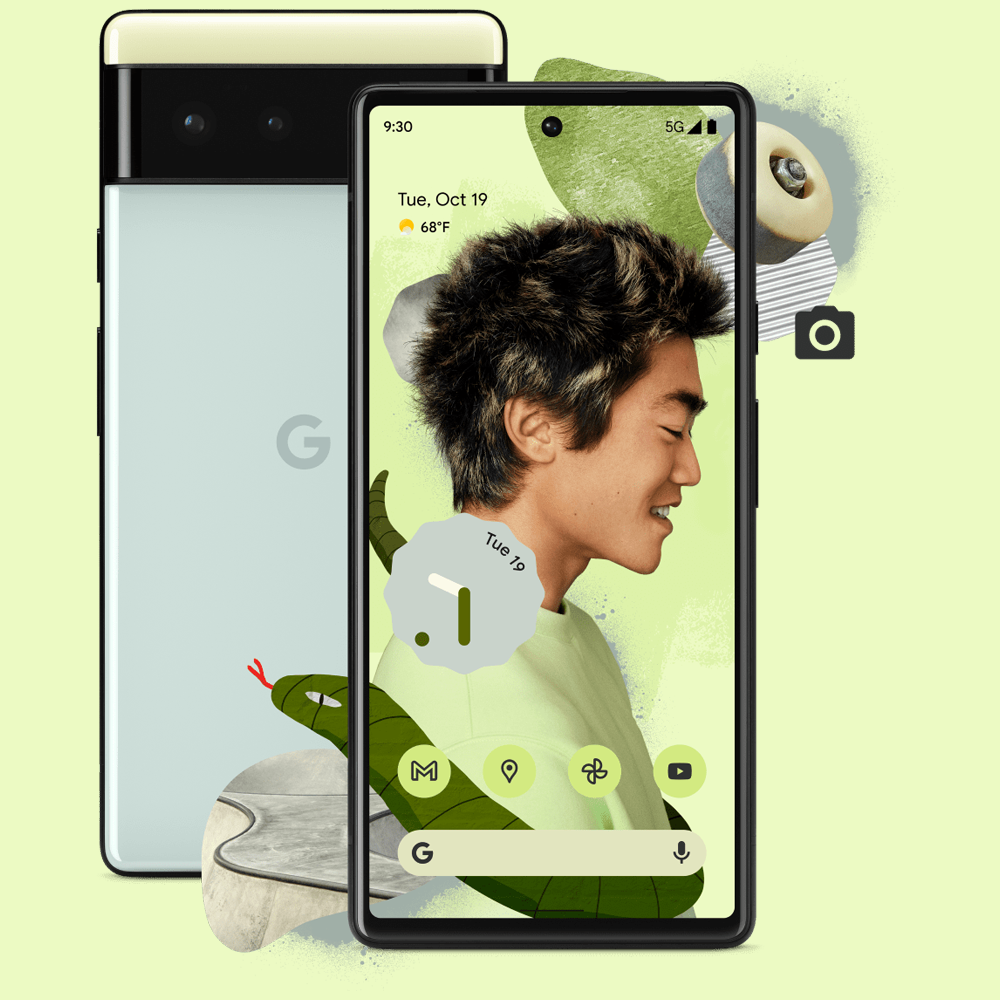
Google Pixel 6
- Excellent affordable value
- Tensor chip performance is impressive
- Outstanding camera software
- Great battery life
- Under-display fingerprint scanner is sometimes frustrating
- Weirdly slippery design
- Display could be brighter

